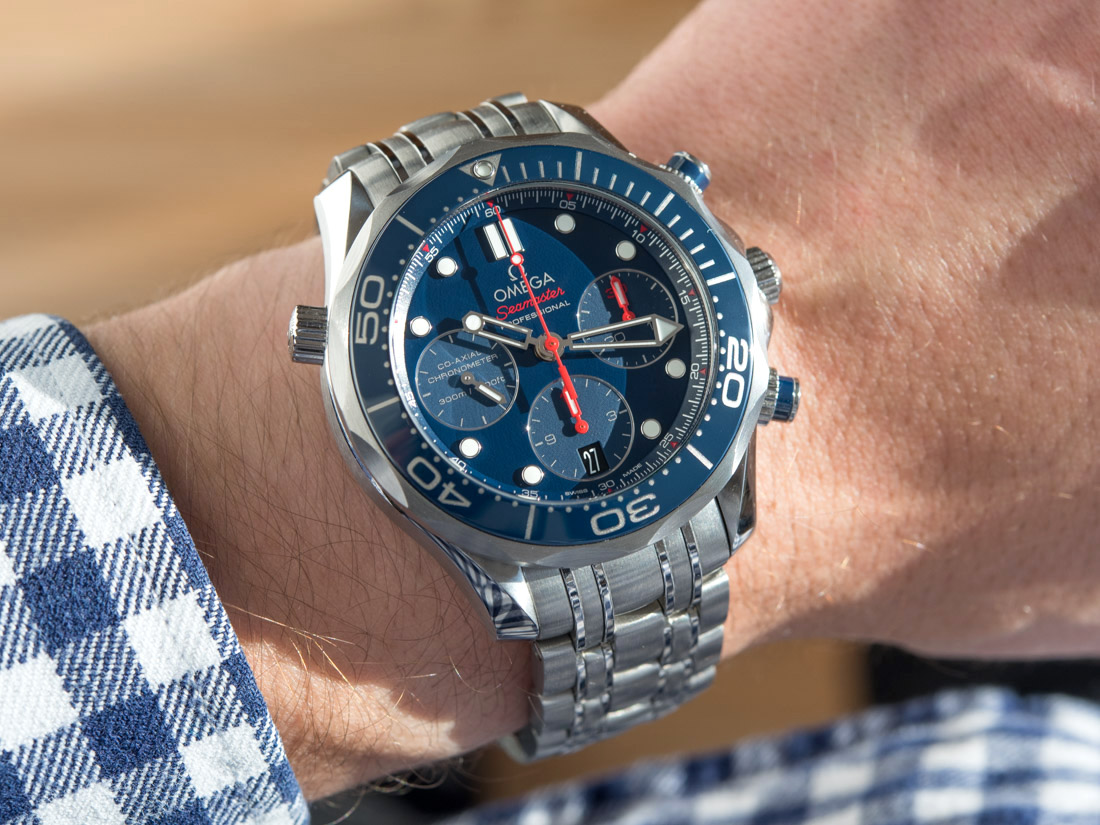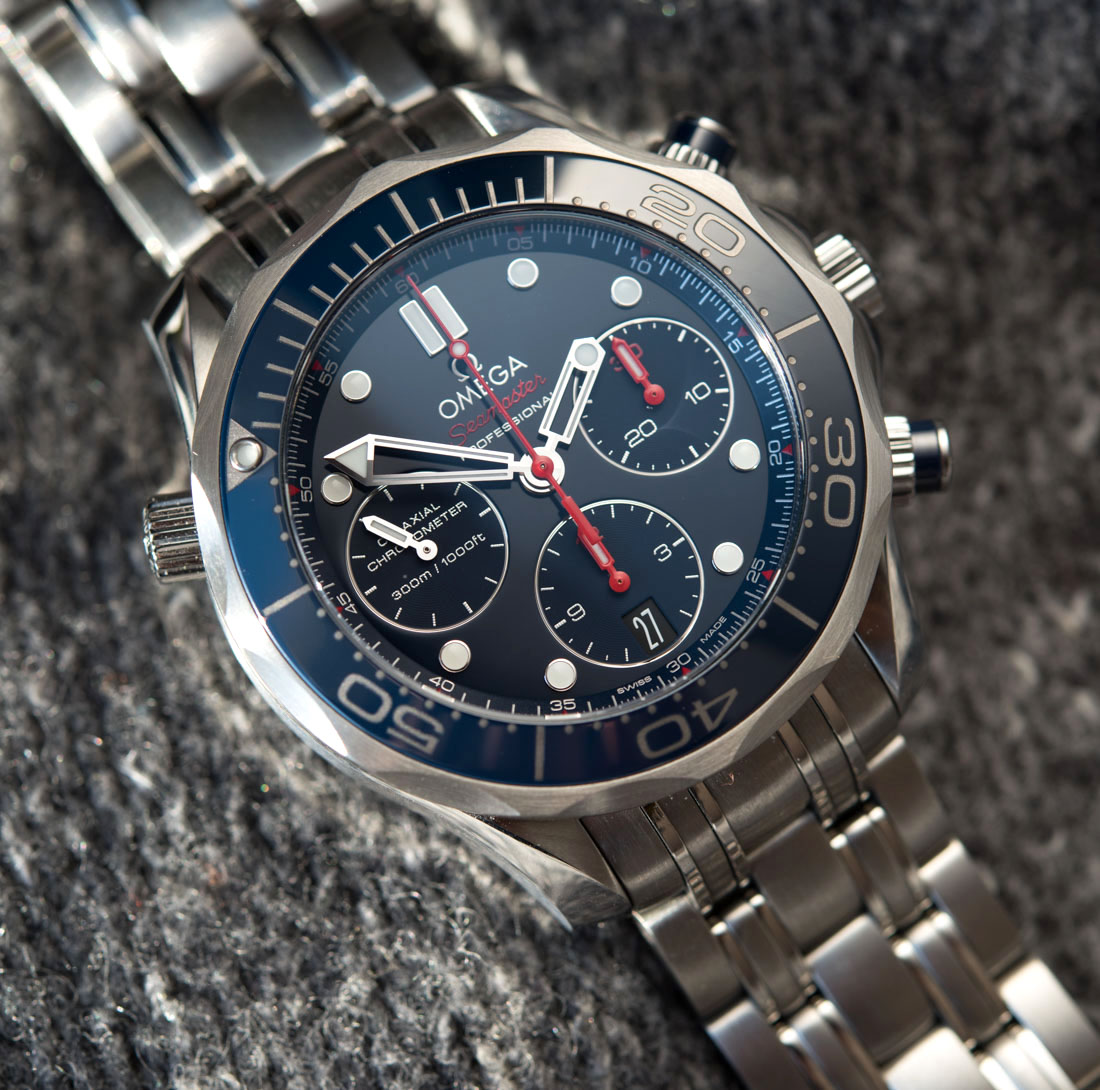
The Omega Seamaster 300M Co-Axial Chronograph 41.5mm sure has been around for a good while now, and it admittedly is not the sort of Omega that’s been taking headlines in recent years, but boy, have I grown to love it for all these – and a variety of other – reasons. It is not without its own quirks either, so let’s see how it fares in the long run.
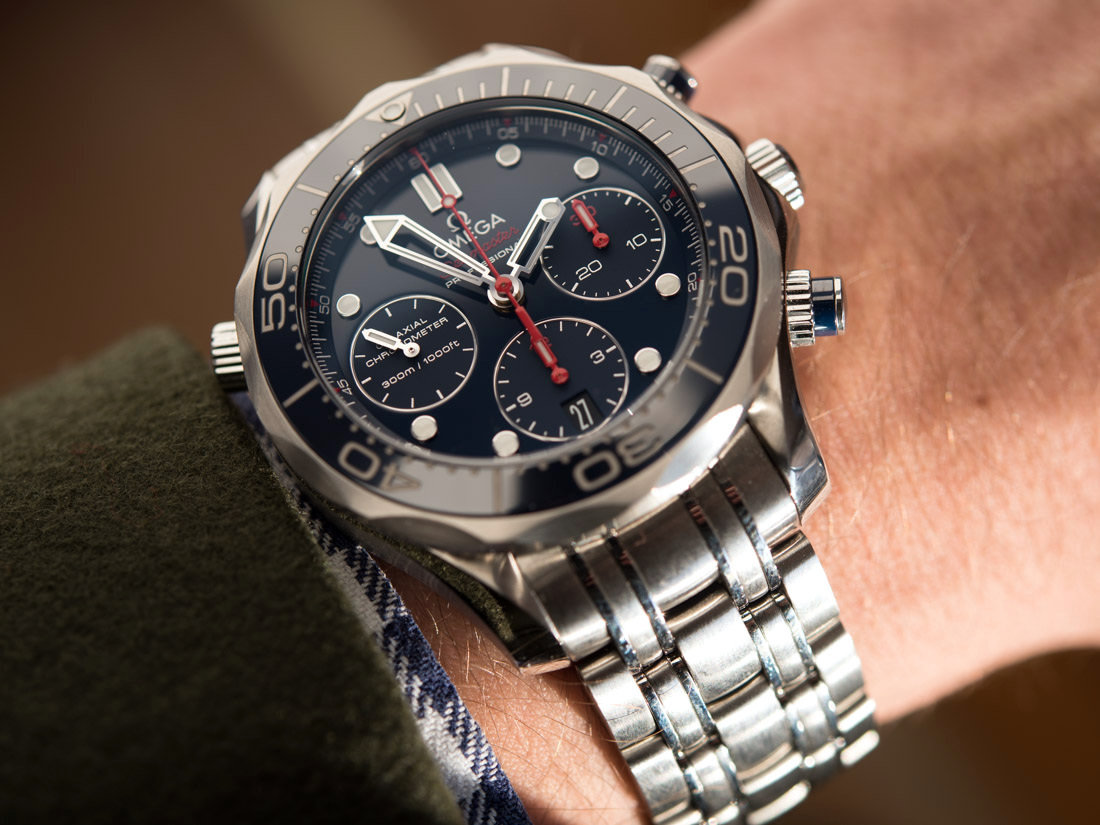
Design
Let me begin with some of those cool design elements and quirks before we talk size, wearability, and legibility. When the Seamaster 300M Chronograph is handed to you, the first things you’ll probably notice are the weight, the proportions, and the way the bezel and case come together. Weight and proportions we discuss below, so let’s jump to the bezel: it is that typical “scalloped” bezel seen on Seamasters before, a bezel that appears to have equal bits bitten out of it.
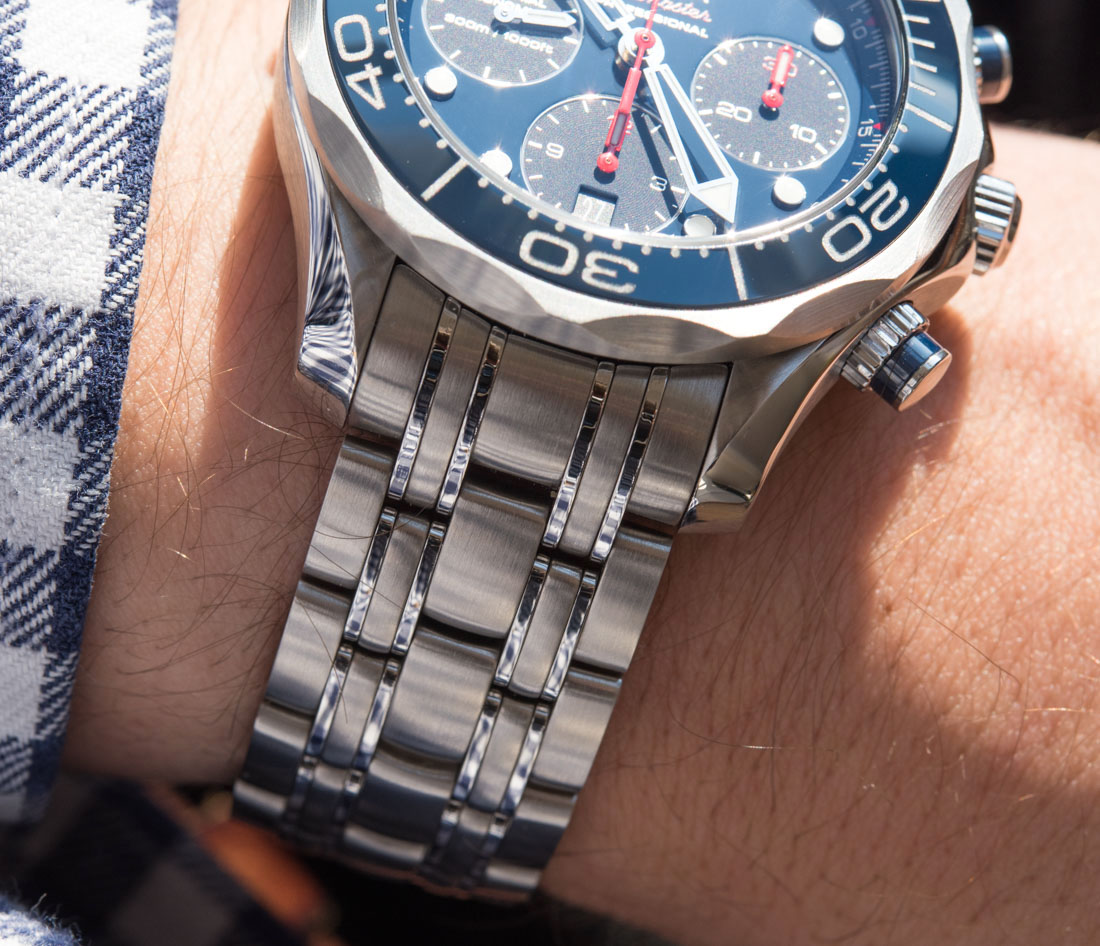
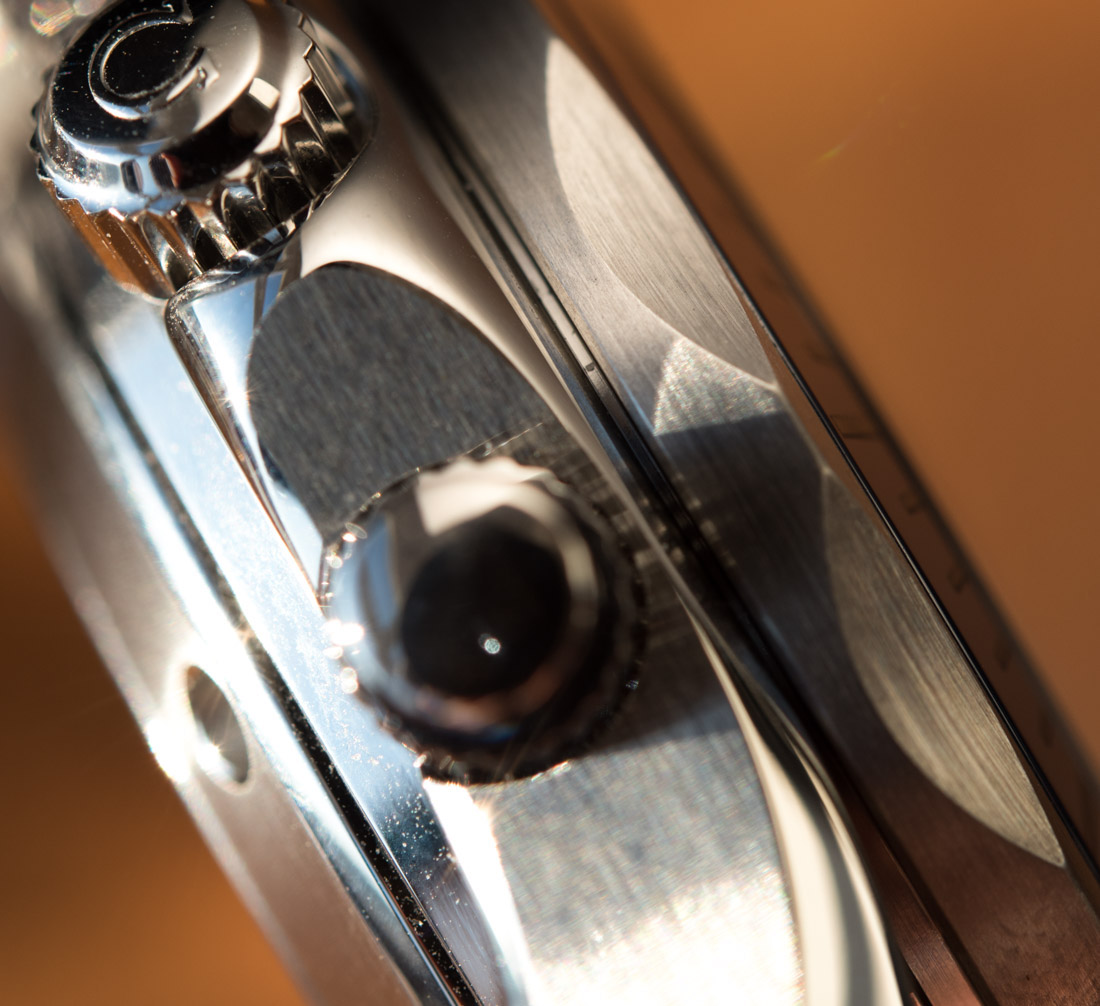
Omega say this is for enhanced grip and it does work: the 120-click bezel is easy to hold on to and turn anti-clockwise. The interesting thing is how this edge of the bezel works aesthetically with the curved polished edge that runs along the side of the case and the downturned lugs. Sometimes a bezel looks like a necessary evil that had to be incorporated into the design, a pancake with a hole in the middle, stuck on top of the watch to keep it from falling apart. This on the Seamaster 300M, I think, is one of the few instances where someone stumbled upon a combination of bezel and case that is both unique-looking and works really well.
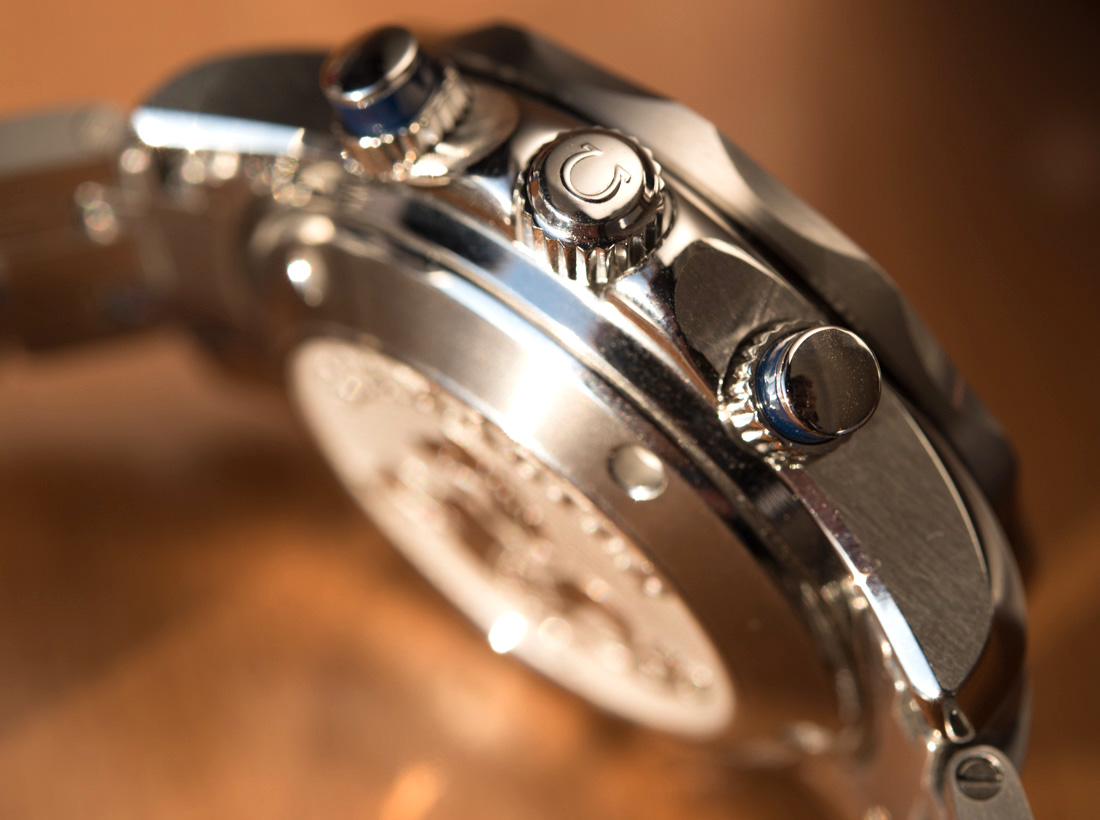

Both sides of the case feature complicated-looking pushers and stuff that helps tell the world you’re a retired 00 agent and/or that you’re really keen on watches looking more complicated and doing more than they’d strictly need to. A most fitting example to this is how both chronograph pushers appear to have screw-down frames which are actually “fake,” as they can’t be turned to lock the pushers. If I was Doug Demuro, this quirk would have me screaming in excitement by now, but since I’m not, I’ll just say I am not in the least impressed by these superfluous elements. This said, I do like the blue ceramic (I believe they are ceramic) rings on the chronograph pushers.
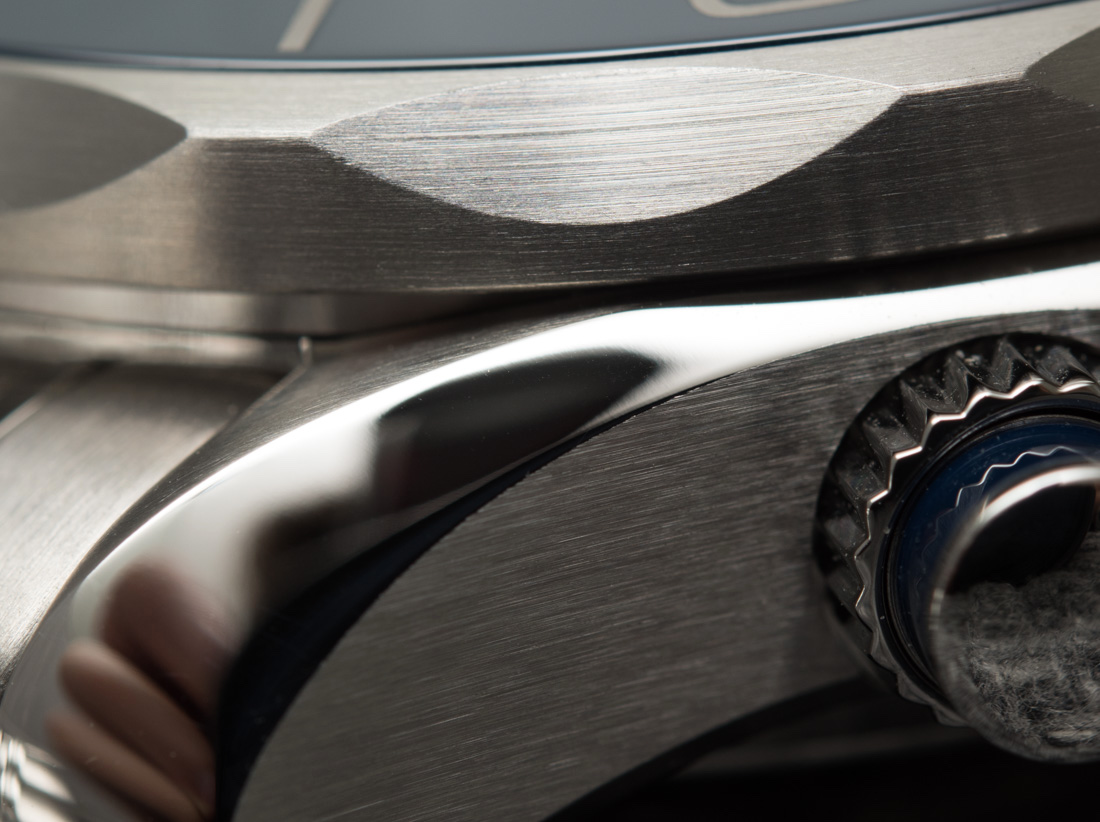
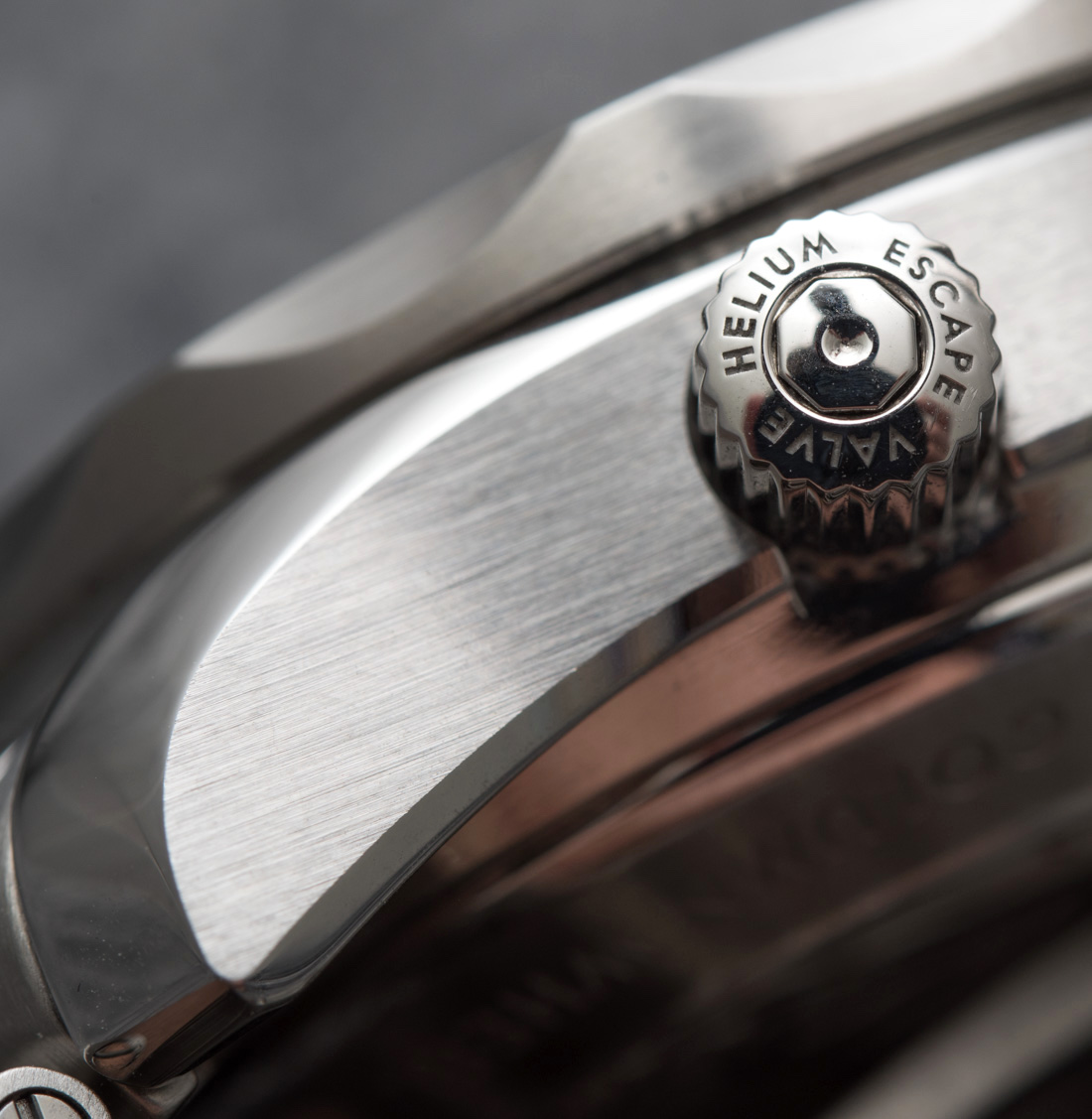
On the other side of the case we have a helium escape valve, an essential feature for the most serious of desk divers. The quirk here is that although it does indeed allow for unscrewing and tightening, there actually is the date corrector pusher hidden in its center. A helium escape valve with a date corrector in the middle… Definitely a worthy contender for the all-time weirdest combination of features in a luxury watch award. To its credit, the pusher works well and looks a lot better here, than those ghastly correctors set into the sides of otherwise sleek case profiles.
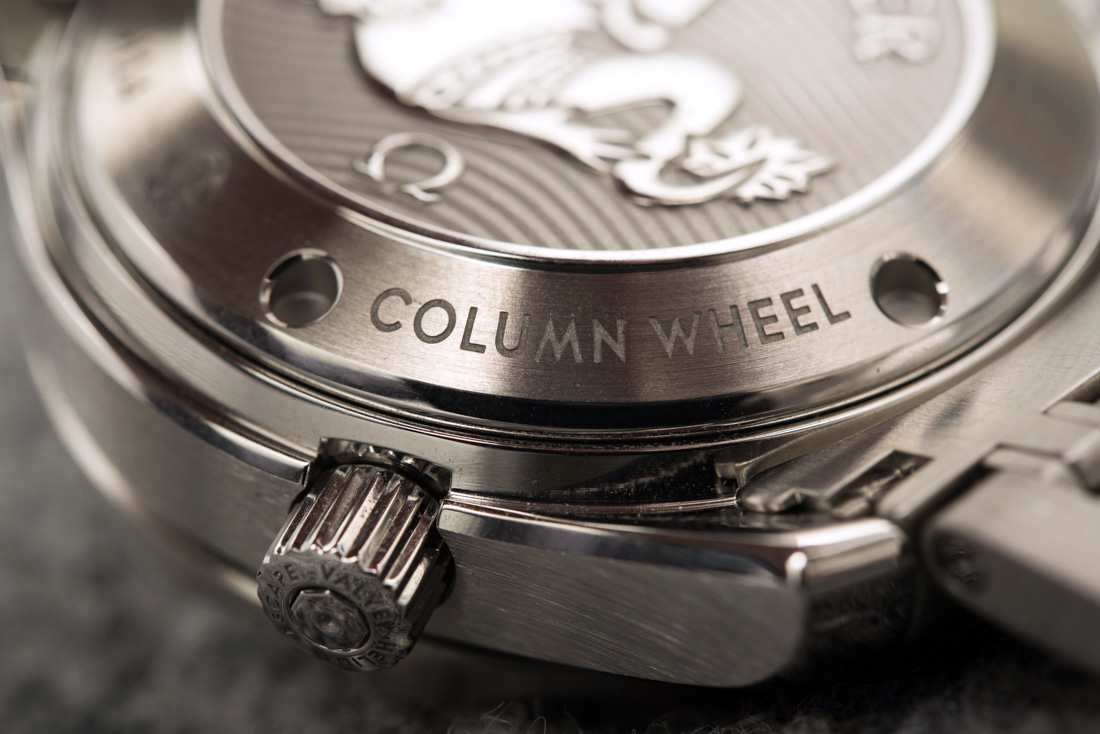
I tested it, just for fun, and the pusher does in fact function irrespective of the state of the tightening of the helium escape valve’s cap. I’ve seen watches get a miserable 30m rating because they have corrector pushers in the side of their cases, and yet Omega somehow managed to maintain the Seamaster’s 300m rating.
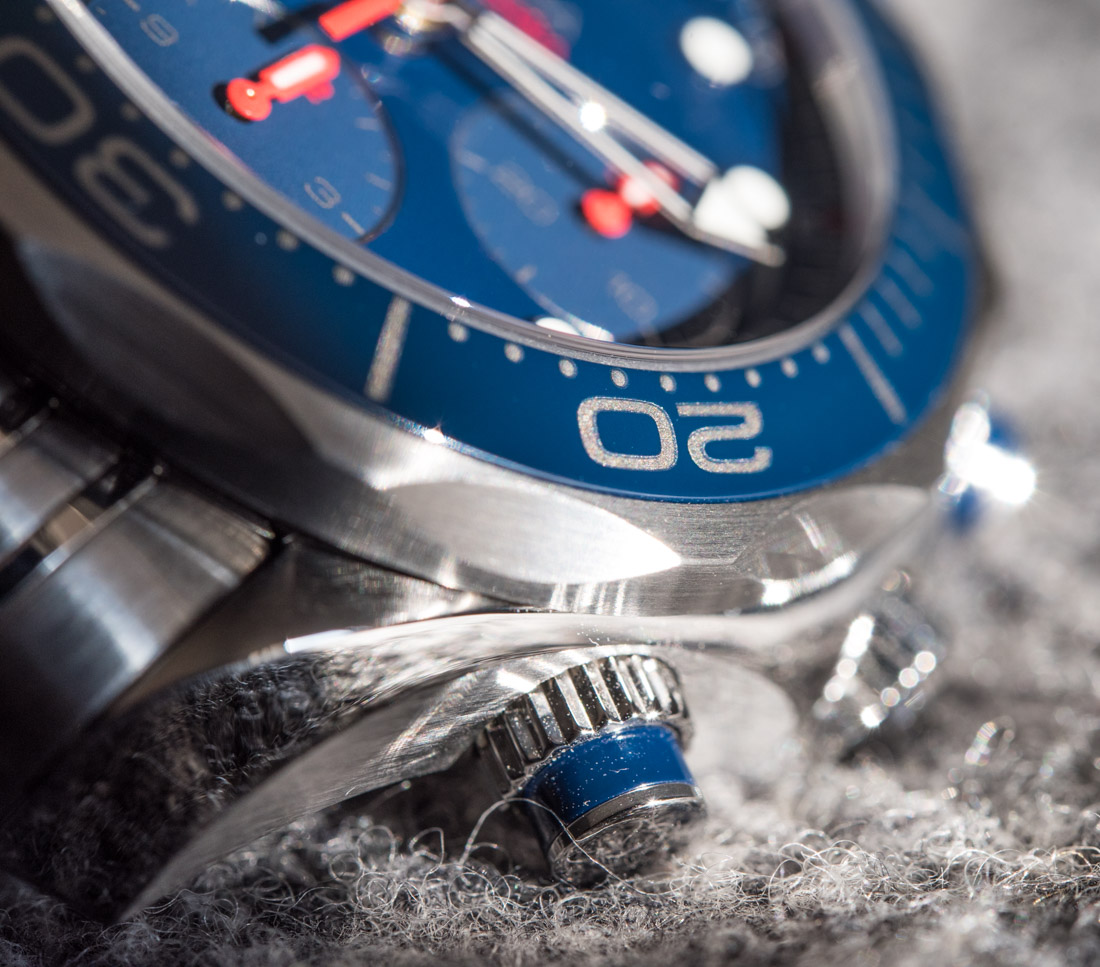

The insert of the aforementioned bezel is in blue ceramic – Omega offers the Seamaster 300M Co-Axial Chronograph 41.5mm in two variations. One is this blue, and there is also a black bezel and black dial version. The larger 44mm version gets a few more color combinations. The ceramic bezel is a most welcome update that just looks so much more modern and high quality when compared to metal inserts. The look of the bezel is in line with what we are used to seeing from ceramic. It can shine in bright colors if the light hitting it is powerful and “white” enough, but in other situations it can take on a flat blue look. I think most would agree that it looks considerably more high-end and impressive than metal bezel inserts.
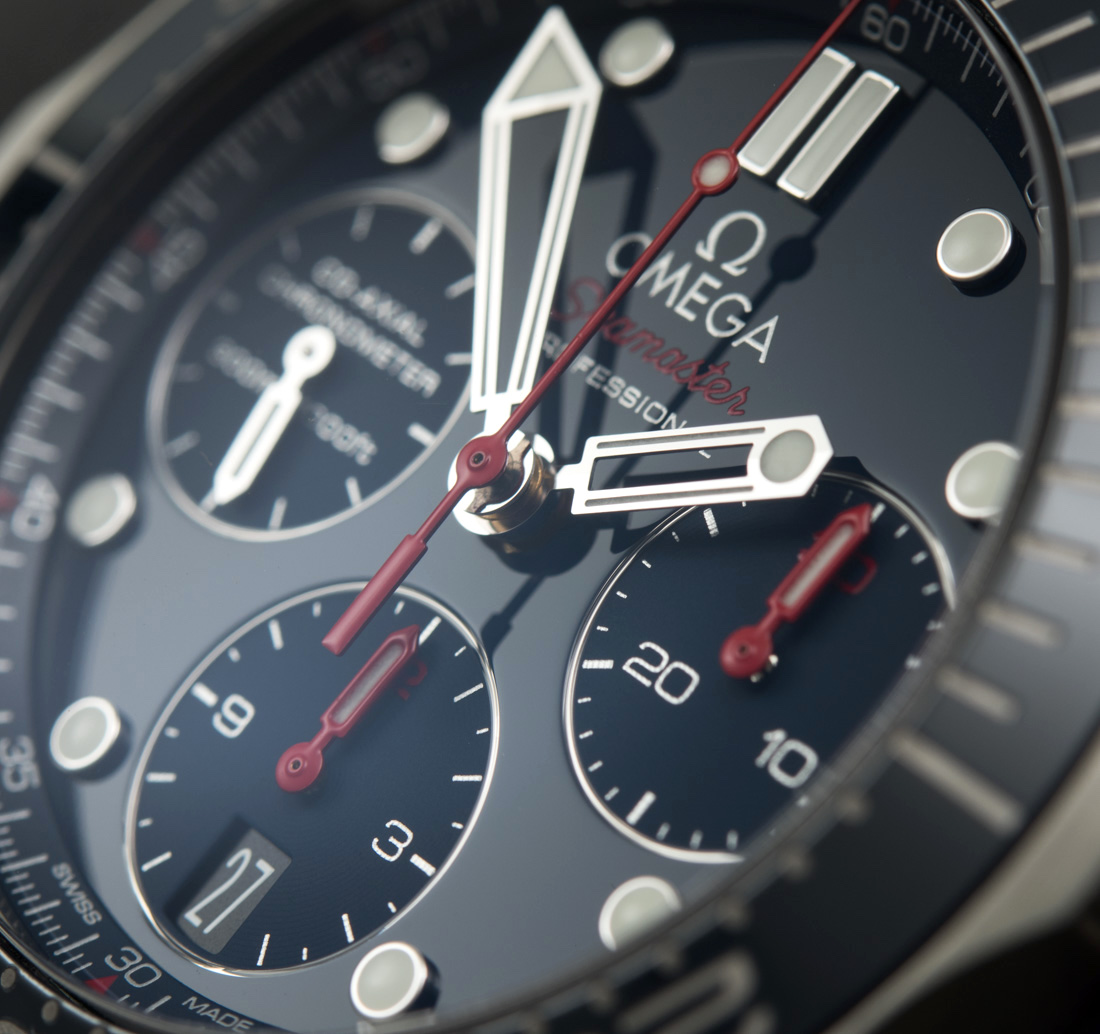
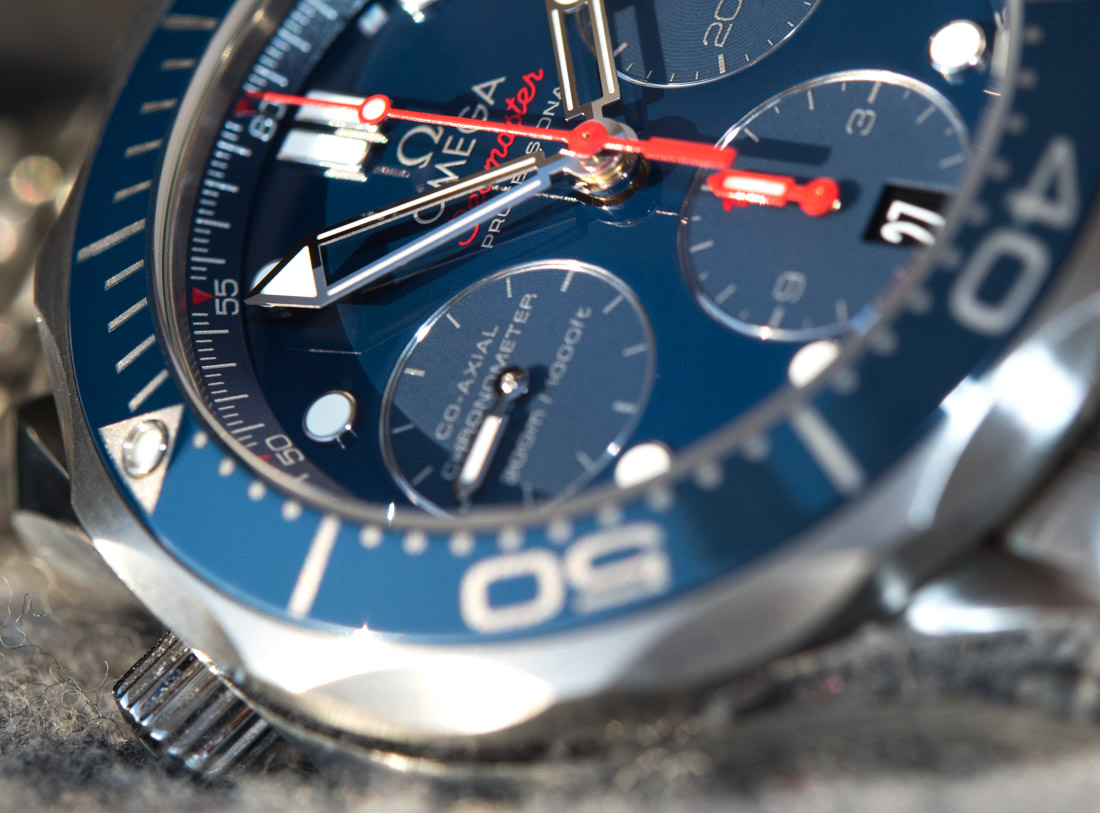
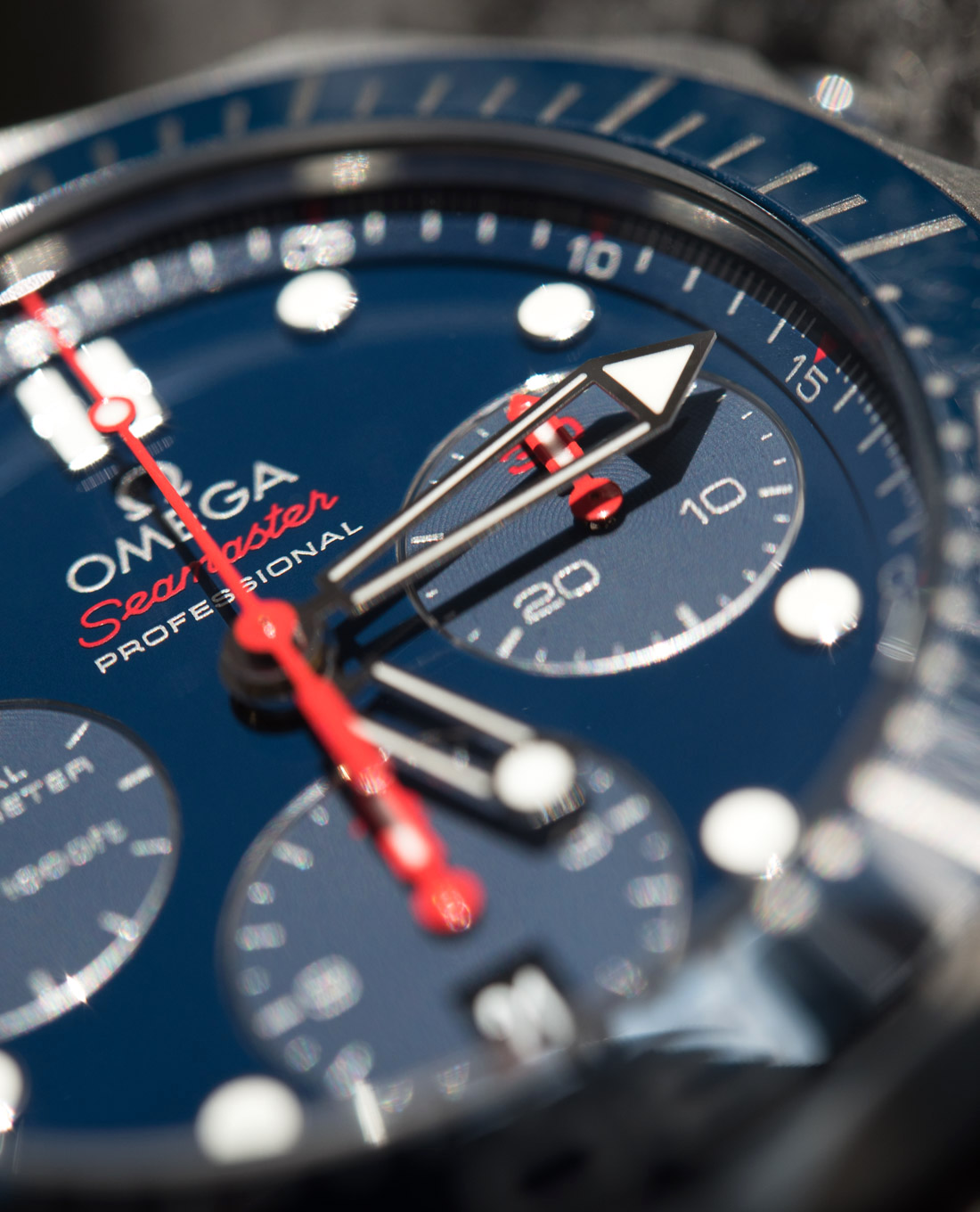
The dial is in blue lacquer but done in a way all lacquer dials should be done in luxury watches. Under wide lighting conditions, the color shows a lot of depth and richness. Finally, it is a lacquered dial that isn’t terribly flat and boring to look at. It actually looks close to enamel. It is also a good match with the ceramic bezel – the bezel is a bit more matte while the dial looks more “polished,” but they still work neatly. The three sub-dials have a barely visible groove texture to them and do appear off-color to the blue of the dial itself, but viewed in the metal these, and even the white on black date disc, appear to blend together way more than can be seen on a lot of the images. Other design elements, features, and the movement will be discussed in their respective segments below.
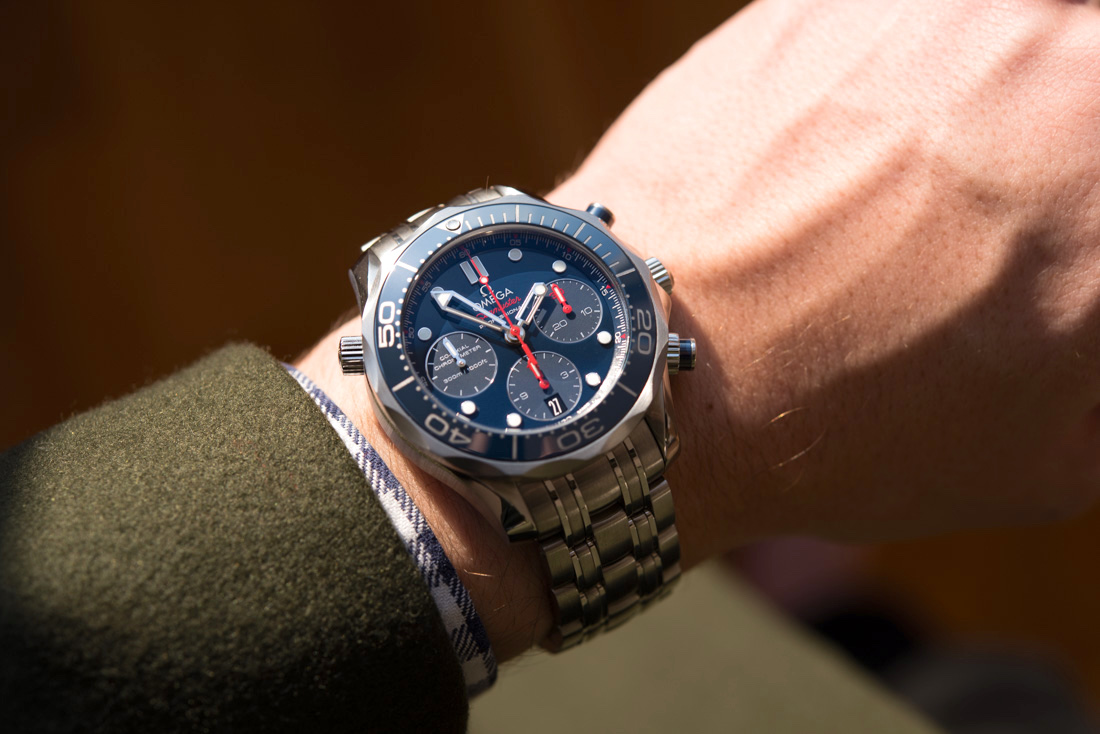
Is 41.5mm Or 44mm The Way To Go?
That depends on a bunch of things and is for everyone to decide – we won’t judge – but the most important factor of them all is probably your available wrist real estate.
In recent memory, there have been a number of Omegas that I liked more than I physically could. No, literally, so many of them are 44.25mm or larger. They are massive timepieces that not everyone, including myself, can wear either for wrist size limitations, and/or because they are too vulgar and brash for the highly developed watch-taste world of 2017. I’d say both factors are equally relevant, as far as I’m concerned.
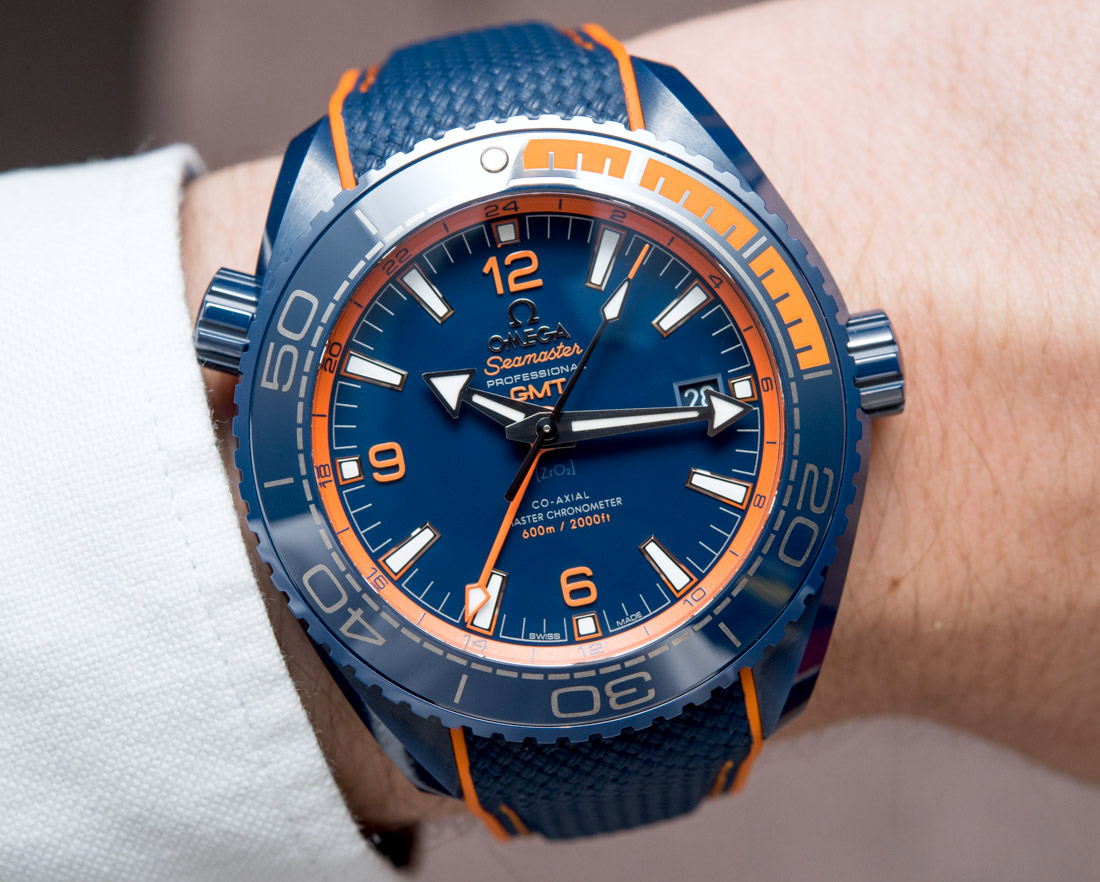
While the Seamaster in 44.25mm is technically still wearable, for frequent/everyday wear a case a few millimeters smaller can make a noticeable difference.
This is bad news for those of us who are limited to wearing smaller watches either by our tastes and preferences in watch sizes, or our narrower wrists, because a lot of the novelties by most all major brands, not just Omega, are exclusively available in larger sizes. While this Omega Seamaster 300M Chronograph isn’t an all-new watch by any stretch of the imagination, I still wanted to check it out for a hands-on review to see if it’s a good enough alternative to all those fancy 44.25mm models.
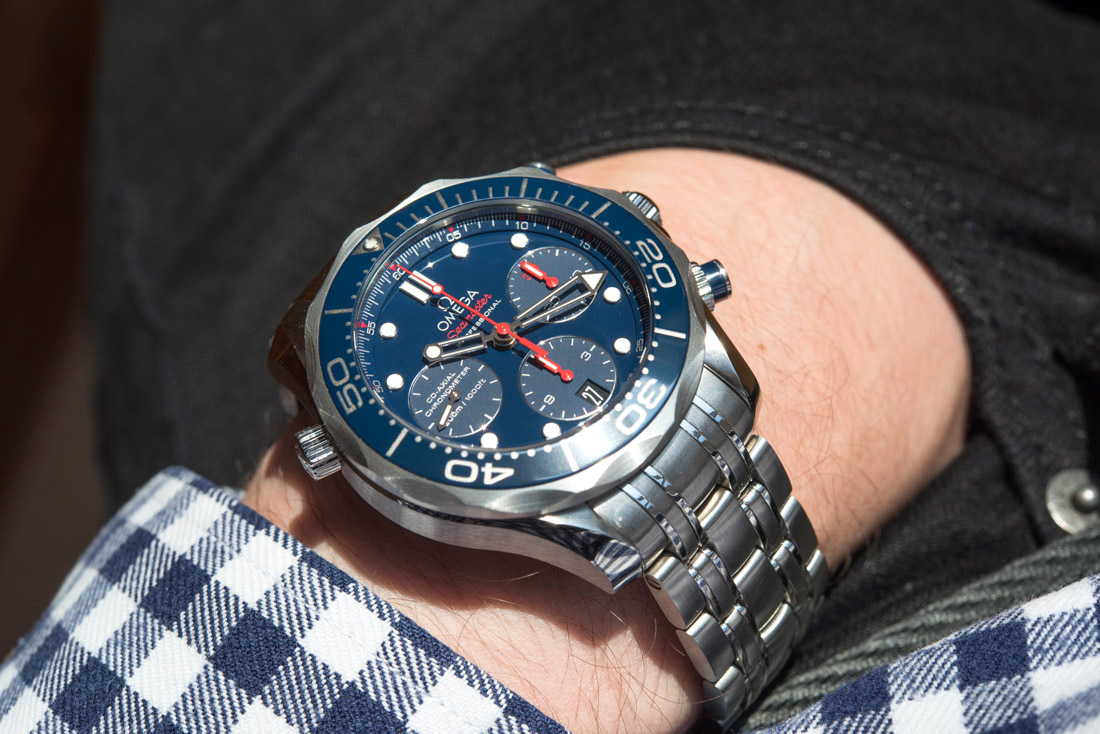
“41.5mm” is in the very name of this watch – a practice more brands with hundreds of models in their portfolio should embrace to make the lives of their sales people and to-be customers that much easier. 41.5 doesn’t sound like much, especially for a 300m diver, but who cares what it sounds like if this is, for many, the upper limit of what is comfortable to wear?

